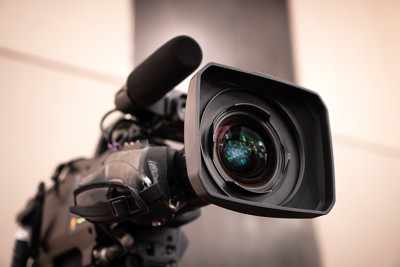 Football is one of the most watched sports in the world, with hundreds of millions of people tuning in to watch the biggest games play out.
Football is one of the most watched sports in the world, with hundreds of millions of people tuning in to watch the biggest games play out.
The Beijing Olympics Opening Ceremony took the crown of the most-watched event in human history back in 2008, but FIFA World Cup finals have given it a run for its money with as many as 600 million people watching.
Nowadays, football fans expect to be able to watch any match that they wish to, whether by fair means or foul. Yet when did it all start? What was the first football match to have television cameras in the ground and how has the industry developed over the years?
From 3D cameras to ones that can buzz around the pitch on wires, it’s now an ever-changing world.
The First TV Cameras At Football Matches
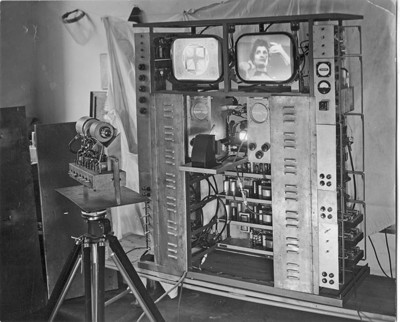
The exact moment that TV cameras were first brought into a football stadium is hard to pin down. That’s hardly surprising when you consider that there will have had to have been all sorts of tests and trials before a company would be confident of being able to actually have anything to show for their efforts.
If someone were to ask you when the first ever football match was shown live, which decade would you opt for? It’s unlikely that you’d be correct, given that the correct answer is 1937. It was the 16th of September when the BBC showed a match between Arsenal and Arsenal Reserves, coming almost exactly ten years after the Gunners had been part of the first live radio broadcast.
Surprisingly, that didn’t lead to a glut of live football matches being shown on television in the same way that you might expect. In the early years of TVs explosion it was only FA Cup matches and the occasional international that would be shown live and it took until 1960 for a First Division match to be broadcast live for the first time.
That was a 0-0 between Blackpool and Bolton Wanderers, which came live from Bloomfield Road. Interestingly, it wasn’t even the full match that was shown. The game kicked off at 6.50pm, but the broadcasting of it didn’t start until 7.30pm in order to ensure that people who were at the 3pm games could make it home to watch it.
Even back then it seems that the fear that television would stop people from going to watch the team that they supported was real. Perhaps disappointingly for television companies, the game’s dour nature meant that no further First Division games were broadcast live in case they were also boring and it began to put people off watching.
Football Broadcasts Develop
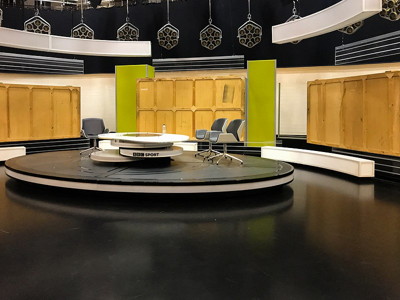
The next major shift in the world of football on television came in 1964 when Match Of The Day was shown for the first time on the BBC. Highlights of the match between Liverpool and Arsenal were shown, a development from the days when the only football people could see where occasional internationals and the FA Cup finals.
The 1950s had seen a slight development in terms of live football, with World Cup matches broadcast from the 1954 iteration of the tournament and ITV showing European Cup matches from the 1955 season, but it was the 1960s that truly saw football take a huge leap. That’s because the 1966 World Cup was shown around the world, seeing football go global.
Given that the majority of live football in the 1960s and into the 1970s was highlights packages that were shown on ITV and the BBC, the live broadcast of the World Cup made it something of a ‘must-see’ event. That England went on to win the tournament for the first time certainly helped ensure football’s burgeoning popularity continued to grow.
Those highlights packages habd to be broadcast after 10pm because of the ingrained belief that television broadcasts would stop people from attending matches. In fact, it wasn’t until the 1980s that the Football League decided football could be broadcast live more regularly and even then it was because the game was struggling financially.
The Move Towards More Regularly Televised Football
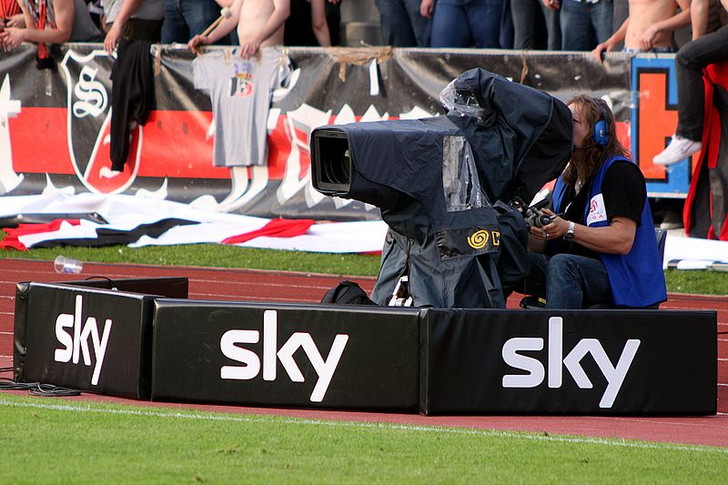
The Football League had sold the rights to football matches to the BBC for a nominal fee for years by the time that the 1980s rolled around. The need for the League to make more money, however, meant that the rights to show games began to increase exponentially. A 1983 deal saw the BBC allowed to show live matches on a Friday and ITV getting to broadcast Sunday afternoon games.
The deal was worth £2.6 million a year, which was a huge amount of money at the time. It was an arrangement that initially suited both parties, but as the 1980s turned into the 1990s, the thirst for more football and the money associated with it began to grow. The commercialisation of sports in America had given English teams an idea that there was money to be found in doing the same.
Trouble began to brew at the top of English football because the Football League owned the rights to all four divisions and distributed the money earned from television relatively equally. As the biggest clubs in Europe were earning large sums of money from television deals, the likes of Liverpool, Arsenal and Manchester United began to feel that they were missing out.
In 1990 BSkyB, which was the television network owned by Rupert Murdoch and News Corporation, began a push to persuade people to start to tune in to its operation. Viewers moved over from free-to-air channels, giving Murdoch a solid negotiating position. In 1992 the First Division clubs resigned from the Football League en masse, giving birth to the Premier League.
It is at that point that televised football truly began to head in a different direction, with Murdoch’s Sky Sports able to be as inventive as it wanted to be in terms of showing matches. Having paid around £305 million for the right to do so, with negotiations taking place every three to four years over broadcast rights. By 2007, that meant that the money Sky paid to the Premier League had risen to £1.24 billion.
Interesting Moments In Football Broadcast History
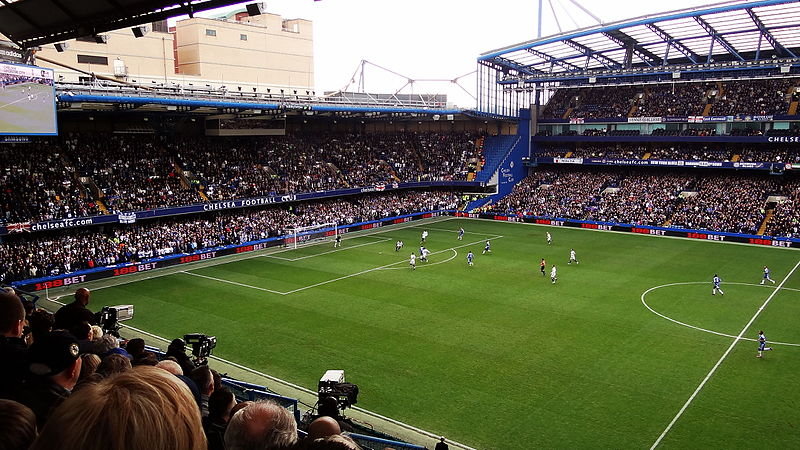
The number of games that are shown on a regular basis as well as the amount of money paid for those broadcast rights is interesting, but we’ve looked at the development of the likes of the Premier League elsewhere on this site.
Here we’re more interested in the cameras themselves, so the following are some key moments in televised football’s history.
The Move To Colour
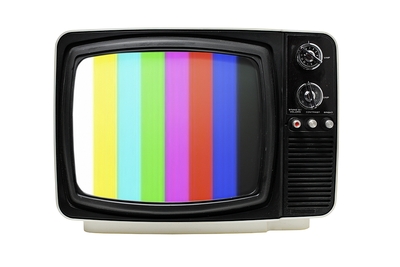 Anyone who knows anything about football coverage will know of the famous line once uttered by John Motson when he said, “For those of you watching in black and white, Spurs are in the all-yellow strip”. It was something of a reprise of a similar line once uttered by Ted Lowe who said, “and for those of you who are watching in black and white, the pink is next to the green.”
Anyone who knows anything about football coverage will know of the famous line once uttered by John Motson when he said, “For those of you watching in black and white, Spurs are in the all-yellow strip”. It was something of a reprise of a similar line once uttered by Ted Lowe who said, “and for those of you who are watching in black and white, the pink is next to the green.”
For football, the move to show games in colour came about in 1969 when the BBC broadcast the match between Liverpool and West Ham at Anfield on Match Of The Day and did so in colour. The plan to move to colour from black and white had been started in 1966, so the fact that it took three years to happen is interesting in itself.
Of course, at the time, most people had black and white sets rather than ones capable of showing colour broadcasts. That’s why the likes of Motson and Lowe made such amusing mistakes, because they were having to bear in mind the two different types of TV watchers at home that were tuning in to see how the games developed.
Slow Motion
 Nowadays we take slow motion replays for granted. In the days of the Video Assistant Referee, we’ve grown accustomed to not only being able to watch things in slow motion but also in super slo-mo, giving us information about matches in minute detail.
Nowadays we take slow motion replays for granted. In the days of the Video Assistant Referee, we’ve grown accustomed to not only being able to watch things in slow motion but also in super slo-mo, giving us information about matches in minute detail.
It hasn’t always been the case, though you might be surprised to learn when slow motion was actually invented.
It had been used for the first time in the United States of America in 1961, though it took several years for the technology to make its way across the Atlantic.
Replays gave the commentary team the ability to look more closely at what had happened and explain it all to the watching public.
It was a new dawn in football coverage.
SkyCam
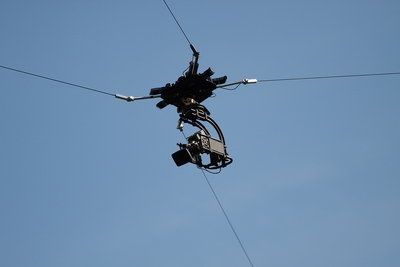 SkyCam actually has nothing to do with Sky Sports, insomuch as the ‘sky’ in the name refers to the actual sky rather than the broadcasting corporation. It is a camera suspended by wires that is stabilised and controlled by a computer system. It is shifted through three dimension of open space by the cables, which allows it to show more unique angles than static cameras can.
SkyCam actually has nothing to do with Sky Sports, insomuch as the ‘sky’ in the name refers to the actual sky rather than the broadcasting corporation. It is a camera suspended by wires that is stabilised and controlled by a computer system. It is shifted through three dimension of open space by the cables, which allows it to show more unique angles than static cameras can.
Garrett Brown, the man who invented the Steadicam, is the person largely credited with having come up with the SkyCam idea. The system was used for the first time in 1984 during a National Football League match between the San Diego Chargers and the San Francisco 49ers. Where American football leads, the sport they call ‘soccer’ soon follows, though.
The Steadicam itself has had a huge impact on the way that football is broadcast, of course. Cameramen are able to track along the touchline, keeping in touch with the match and giving viewers the sense that they’re right in the middle of the action. Indeed, it’s probably been more revolutionary than the SkyCam, also known as the SpiderCam, in how much it is used for football coverage.
3D Football
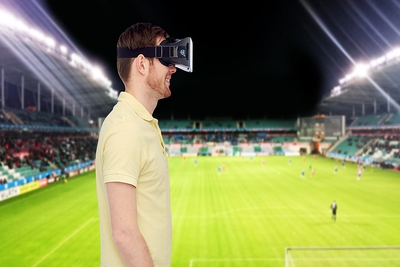 All of the aforementioned technological developments caught on quite quickly in the world of football, but the one that has yet to truly take hold is that of 3D football broadcasts.
All of the aforementioned technological developments caught on quite quickly in the world of football, but the one that has yet to truly take hold is that of 3D football broadcasts.
Whilst High Definition was an easy sell, especially given modern televisions broadcast in HD as standard, 3D is not something that most people have as an option on the TV.
In 2010 Sky Sports decided to broadcast the match between Arsenal and Manchester United using 3D technology. Initially, the match could only be seen in that fashion by people who went to specially equipped pubs to do so.
It was hardly an immediate winner, with one fan saying it looked like ‘a popup book’ and another saying that the technology would be better suited to boxing.
360 Degree Coverage
 The final revolution to mention when it comes to the world of football broadcasting is that of 360 degree coverage. Its invention allows football supporters to watch matches in a virtual reality setting, essentially giving people the ability to feel as though they are actually present at a football stadium when watching a game from the comfort of their own home.
The final revolution to mention when it comes to the world of football broadcasting is that of 360 degree coverage. Its invention allows football supporters to watch matches in a virtual reality setting, essentially giving people the ability to feel as though they are actually present at a football stadium when watching a game from the comfort of their own home.
This way of watching football was introduced on a large scale for the first time during the 2018 World Cup in Russia. The BBC allowed viewers to essentially enter their own private box, looking around the football pitch at anything that took their fancy. Instead of being stuck watching whatever the match director wanted you to, you could focus on the things that you thought were important.
Whilst the 2018 World Cup was the tournament that 360 degree coverage began to catch on in, it was far from the first time that the technology had been used. In July of 2016, then 18-time top-flight winners Liverpool decided to show a friendly between themselves and Huddersfield Town using the technology, broadcasting it on YouTube as part of the clubs social media development.
That move came a year after the French club Lille had done the same thing, showing both the match and the changing room before kick-off in 360 degrees. Whether it catches on moving forward in the same way that 4K broadcasting seems to have done remains to be seen, but it’s unlikely that many people will chose 360 degree coverage over the more traditional options available.
